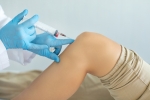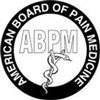Home »
Blog » Platelet-Rich Plasma (PRP)
| Stem Cell, PRP, Acupuncture in Queens & Long Island, New York
Platelet-rich Plasma (prp) | Stem Cell, PRP, Acupuncture in Queens & Long Island, New York
Patellar tendinopathy (PT) is “jumper’s knee,” a clinical and chronic overuse condition of unknown pathogenesis and etiology. A large proportion of patients are refractory to conservative treatment, and a variety of new therapies have emerged, including PRP injections. PRP-containing growth factors have been shown to play a role in tendon healing.
Read more
Low back pain (LBP) involves a spectrum of different types of pain (e.g., nociceptive, neuropathic, neoplastic, and nonspecific) that frequently overlap. LBP can be caused by lumbar spine elements (e.g., soft tissue, vertebrae, zygapophyseal and sacroiliac joints, intervertebral discs, and neurovascular structures). Therapy for LBP usually begins with self-care and medication in combination with non-pharmacological methods, such as physical therapy and psychological treatment, in appropriate patients.
Read more
Symptomatic knee osteoarthritis (OA) is a leading cause of disability globally with a significant financial impact. The development of knee OA involves the cartilage and the entire joint, with changes in the articular bone, synovial membrane, joint capsule, ligaments, and musculature around the joint. There is no disease-modifying therapy for the management of OA; therefore, the treatment goals are to improve pain and function.
Read more
Musculoskeletal pain is the most common pain reported by patients. Platelet-rich plasma (PRP) is widely used to treat musculoskeletal pain. However, the efficacy of PRP to treat this pain remains controversial. This review highlights the application of PRP in the treatment of musculoskeletal pain. PRP treatment appears to reduce pain and improve function in patients with musculoskeletal pain.
Read more
More than 20% of adults in the United States suffer from chronic pain, which is persistent pain that lasts three or more months. This pain affects your physical, emotional, social, and financial well-being. Platelet-rich plasma (PRP) therapy is becoming a popular treatment for people suffering from chronic pain. Here, we share five benefits of PRP therapy for chronic pain.
Read more
Platelet-rich plasma consists of two elements: plasma, or the liquid portion of blood, and platelets, a type of blood cell that plays an important role in healing throughout the body. Platelets are well-known for their clotting abilities, but they also contain growth factors that can trigger cell reproduction and stimulate tissue regeneration or healing in the treated area. Platelet-rich plasma is simply blood that contains more platelets than normal.
Read more
Whiplash is diagnosed by a clinician when the patient reports some neck pain in the aftermath of trauma capable of causing an acceleration-deceleration injury – most commonly a motor vehicle accident. However, the specifics of a whiplash diagnosis can be complex and have long been the subject of controversy. In the mid-and late-1800s, there were increasingly common disputes regarding train passengers injured in collisions and whether their claims of the mysterious “railway spine” were legitimate.
Read more
What Is Plasma And What Are Platelets? Plasma is the liquid portion of whole blood. It is composed largely of water and proteins, and it provides a medium for red blood cells, white blood cells, and platelets to circulate through the body. Platelets, also called thrombocytes, are blood cells that cause blood clots and other necessary growth-healing functions. Platelet activation plays a key role in the body's natural healing process.
Read more
Platelet-rich plasma injections are becoming more widely known for their success in helping to heal injuries and manage arthritis pain. The board-certified physicians offer platelet-rich plasma injections as part of a comprehensive treatment plan for patients managing chronic pain or healing after surgery. What is Platelet-Rich Plasma? Platelet-rich plasma (PRP) is a component of your blood that contains a high concentration of proteins. The plasma in your blood contains platelets that help your blood clot and promote cell growth, so it aids in the healing process.
Read more
The field of regenerative medicine is rapidly expanding to help repair parts of your body that no longer function as well as they should due to injury or the natural aging process. The expert physicians provide patients with cutting-edge therapies of regenerative medicine. What is Regenerative Medicine? According to the National Institute for Health, regenerative medicine is the process of creating living, functional tissues to repair or replace tissue that no longer works as a result of disease, age, damage, or birth defects.
Read more
Love this Post? Spread the World






















